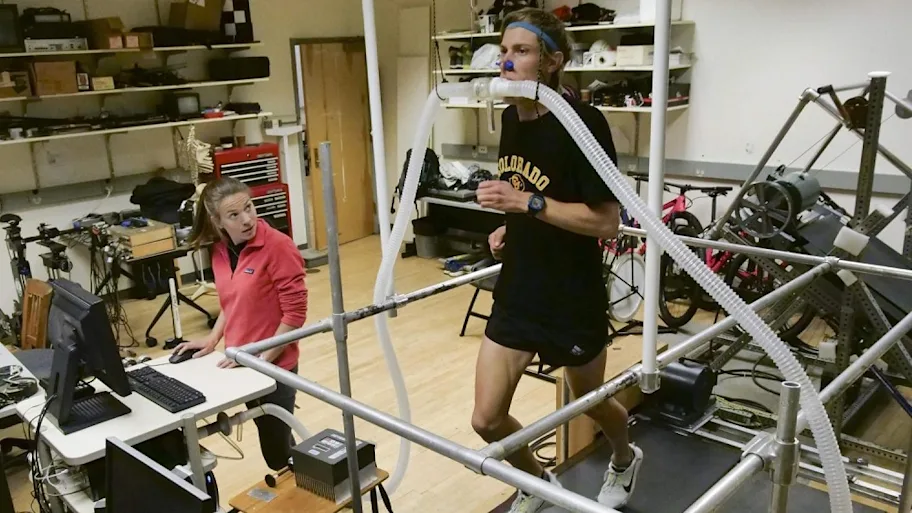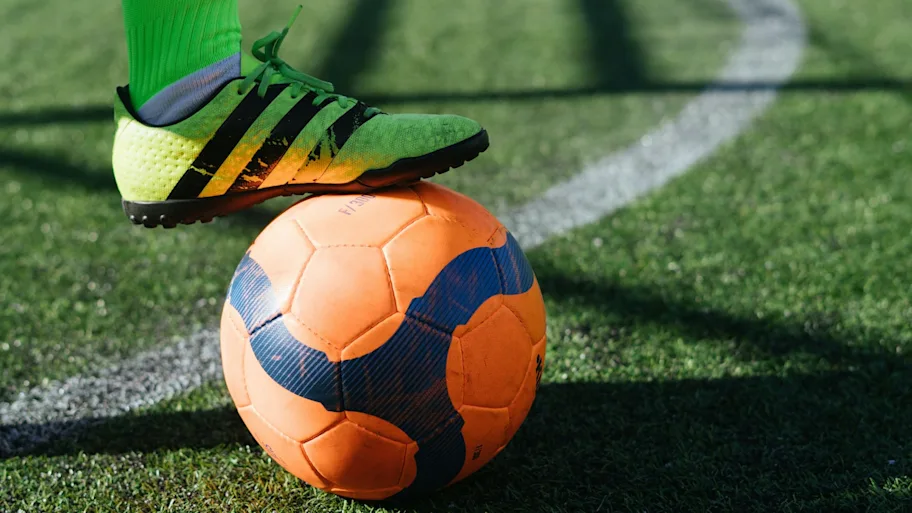
- Science News
- Featured news
- Research finds high-tech shoe actually reduces race times for elite athletes
Research finds high-tech shoe actually reduces race times for elite athletes
By Peter Rejcek, science writer

Crowd of runners crossing 1st Avenue/ 59th Street bridge, NY, during NY City Marathon. Credit: Joseph Sohm/Shutterstock.com
A new paper is the first to study the effects of advanced shoe technology on the performance of elite long-distance runners. Researchers found that the new footwear, featuring lightweight foam and a rigid plate in the midsole, significantly reduced race times for both men and women. Female runners benefited most, shaving about two minutes and 10 seconds off marathon times, which represents a 1.7% boost in performance.
For elite runners competing in long-distance races, every second counts. So when Nike introduced ‘advanced shoe technology’ in 2017, questions arose about whether the new design would significantly affect performances in professional sports. A new paper published in Frontiers in Sports and Active Living found that the new footwear indeed reduced running times for both elite male and female competitors.
The study analyzed seasonal best times for elite male and female runners in three race categories – 10km, half marathon and marathon races – between 2012 and 2019. The researchers found a statistically significant decrease in race times after 2017, which coincided with the premiere of the Nike Vaporfly 4%. In their paper, they stated the research was conducted in the absence of any commercial or financial relationships that could be construed as a potential conflict of interest.
Female elite athletes appeared to gain the most benefit from the design improvement, which features a thicker, lighter foam and rigid plate along the midsole. Their seasonal best times between 2016 and 2019 decreased anywhere from 1.7% to 2.3%, versus 0.6% to 1.5% for the men. For example, the new shoe technology improved female marathon time by about two minutes and 10 seconds, a 1.7% boost in performance.
“As far as chronometric performance is concerned, it is in our opinion a major advancement,” says Dr Stéphane Bermon, lead author of the paper and director of the World Athletics Health and Science Department.
Download original article (pdf)
Mysterious mechanics
The mechanics behind the improvements in performance remain somewhat of a mystery. One advantage of the new shoe technology is that it uses the latest generation of lightweight foam in the midsole, which provides the runner with a higher energy return. The embedded stiff plate in the midsole also contributes to maximizing energy return in each step. In effect, the shoe works to propel the runner forward with a little less effort.
The statistical gap between genders was unexpected, according to Bermon. One advantage could come down to weight between the sexes.
“Women are lighter and could possibly benefit more from the enhanced rebound effect achieved by the foam/stiff plate combination,” he says. “Their slightly different running pattern, compared to men, could represent a more favorable condition for this footwear technology to play its ergogenic role.”
A previous 2018 statistical analysis had already suggested a decrease of between 3% and 4% in half marathon and marathon race times based on hundreds of thousands of self-reported results. However, the present study was the first to look at the top seasonal best times for elite athletes.
While the research included a majority of results from east African runners, like Ethiopian and Kenyan, who have come to dominate the sport, the paper noted that non-East-African elite runners experienced similar improvements in performance.
“These results confirm that advanced footwear technology has benefits to the elite male and female distance runners,” Bermon says. “Whether this technology will be banned or simply controlled, as it is currently, is still to be decided by World Athletics.”
No immediate follow-up studies are planned, though Bermon says additional research is needed to understand whether mass adoption of the new footwear by both recreational and elite runners causes more or fewer injuries, especially in light of all the different types of running styles.
REPUBLISHING GUIDELINES: Open access and sharing research is part of Frontiers’ mission. Unless otherwise noted, you can republish articles posted in the Frontiers news blog — as long as you include a link back to the original research. Selling the articles is not allowed.






